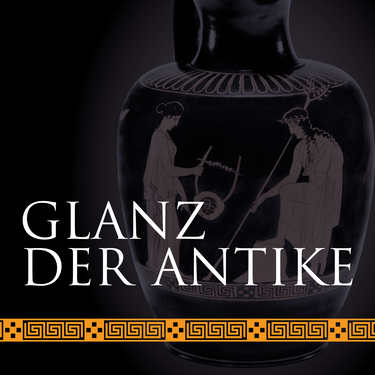About the exhibition
“Glanz der Antike” (Splendours of Antiquity) presents several hundred objects spanning more than 6,000 years – from the 5th millennium B.C. to the 8th century A.D. – and unveils many ancient cultures of the Mediterranean and the Near East, reaching as far as Iran and the Indus. Whether Greeks, Etruscans or Romans as well as the highly developed Near Eastern cultures, all of them show one constant aim – to establish relationships with others in order to create a worldwide exchange of goods, ideas and technology. Without this, no further development of society and culture would have happened. With the combination of archaeological objects, immersive evocations, models of ancient buildings, examples of taxidermy, and interactive experiences, the antiquities collection offers to visitors of all ages a fascinating journey through time.
Precious ancient art works and impressive implements demonstrate the diversity of daily life in ancient times, whereas images of gods and grave goods tell us of different beliefs and the search for safeness. Splendour and crisis coexist then as today.
Following Alexander the Great
Treasures of Palmyra and Gandhara
A new exhibition gallery guides visitors to the Ancient Near East, to the origins of several advanced civilizations. The vast territory includes the island of Cyprus, the Syro-Palestinian area, Mesopotamia and Iran with connections as far as the Indus River Valley. Palmyra, an oasis in the Syrian Desert, or the area of Gandhara near the Hindukush Mountains were prospering commercial centres. They also became melting pots of different ancient cultures.
Follow the route of Alexander the Great from Asia Minor to a region which is now Northern Pakistan and Afghanistan and explore the ceramic art of ancient Cyprus, funerary sculpture and glass products from the Syro-Palestinian area, silverware from Persia and stone sculpture from Gandhara. Visitors can learn about the legacies of these ancient cultures and understand their relevance today.
